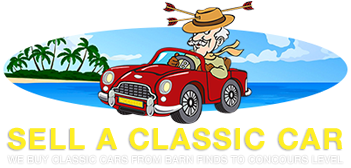Excalibur
Excalibur
The Excalibur automobile is a Neoclassic automobile which was initially styled after the 1928 Mercedes-Benz SSK by the renown auto designer Brooks Stevens and which was generally acknowledged as the oldest and largest manufacturer of upscale limited production automobiles in the United States. Stevens is credited with coining the phrase 'contemporary classic' and when pressed to elaborate on this description he described his new designs as 'new old cars!'
Beginning in the mid-1960s Stevens and his sons began production of the Excalibur and subsequently formed the Excalibur company to manufacture and market the cars which were to built using fiberglass bodies and to be sold with 327c.i./300HP GM Corvette engines (to be later offered with optional Paxton superchargers and 4 speed manual transmissions) and which were all styled after the original inspiration of the 1920's/30s-era Mercedes roadsters. The result was a sensation: the Excalibur was smaller and lighter than the 1928 Mercedes SS which it mimicked, but every bit as fabulous with speeds of 0-60 in 7 seconds and top speeds of over 149mph (which was astounding for both those days and indeed today!) and the cars and their reputation soon flourished.
They were built as two seater Roadster's, four seater Phaeton's and Limousines and were factory built and produced in Milwaukee, Wisconsin with parts such as the flexible exhaust sections being bought in from Germany from Mercedes's own supplier, the seats were modified Studebaker items, the dashboard instruments were from the Hawk GT and the radiator grille emblem was the famous cross in a circle which Brooks had used on his first competition Excalibur. It was named 'Mercebaker' because Studebaker had been a Mercedes distributor for some time, although the chromed badges at either side if the hood/bonnet read Studebaker SS..
The first series of cars (Series I) were produced between 1965-69 and there were 259 'SSK Roadster's'; 100 'SS Phaeton's' and 29 smaller full steel body '35X' Excalibur's were built. The second generation Series II was produced between 1970-74 with 270 Phaetons now due to their high demand and only 72 Roadsters. From a price of $6000-$7250 for the Series 1, the Excalibur Series II went up to $12,000 -$13,000 with that extra cost being justified for all new upgrades including air conditioning, variable ratio power steering, adjustable steering column, servoed brakes, 'Positraction' differential, chromed wire wheels, stereo radio, two spare tires mounted in the front fenders, driving lamps, air horns and constant level rear shock absorbers. Also in 1972 the Chevrolet Corvette Big Block 454 engine was introduced. The Series III cars were built between 1975-79 and cruise control was now standard. Production figures shot up to 1,065 Phaetons and 76 Roadsters along with the selling price increasing to over $30K by its final year of production in 1979. The Series III was fundamentally a Series II car that had been luxuriously modified whilst retaining the traditional style but featured more enveloping fenders/wings. The chassis was a new one, although still a ladder-type affair, but reinforced by a central 'X'-shaped member and featuring a removable bolt-on front section. Wheelbase had once more been stretched to 112 inches and the whole new chassis assembly housed the Chevy Mk IV 454 cu. inch (7500 cc) big-block V8. The 'Phaeton' version continued to sell in greater numbers than the 'Roadster', as had indeed been the case since 1969, and even though production did remain restricted (even by a specialist manufacturer's standards) Excalibur broke a new sales record in 1977 with 237 units.
In 1980 The Series IV was introduced and the styling also evolved a little. It still undeniably evoked vintage Mercedes, but this time emulated the 500/540K series rather than the SS/SSK. The Series IV was obliged by ever more rigorous anti-pollution regulators to take on a smaller engine, the GM 5.0-liter (305 cu. in.) and so unfortunately continued the decline in performance for this glorious marque. It would continue being built though through 3 more generations with the final 100 limited editions being built in 1995 and now being offered for sale at an MSRP of $74,897, with the Phaeton's being offered at an MSRP of $98,897 and the SSK Roadsters now at an MSRP of $104,897!
The Phaeton bodystyle was long considered the traditional symbol of success in vintage cars with a timeless beauty and true four passenger comfort and only the finest of appointments were made available in this luxurious open top touring automobile with imported leathers, exquisitely detailed 'Zebrano' wood instrument panels, power windows and mirrors, cruise control and air conditioning.
Selling your Excalibur or want a valuation?
Then please call us today at WCC, we are the no hassle way to sell any classic car including your Excalibur
As a long time licensed and bonded California auto dealership, we will take care of all the paperwork for the sale of your car ….. properly take care of all the paperwork that is, with no car left still registered in your name; we will give you a fair and no BS immediate cash offer for the car; imagine no advertising costs, no dealing with “tire kickers”, no bad checks, no non-existent wire transfers, no waiting for your money and probably most importantly, no strangers at your home or in your business .. period.
We will also arrange the immediate professional pick up and transportation of your car by a licensed auto shipper from anywhere in the continental United States. Ultimately, we are one of the quickest, safest and easiest way to sell your classic car today.
We have the knowledge and power to execute the deal immediately, so if you want some friendly advice or just a chat about how to sell us your Excalibur then don’t hesitate to call us on 424-376-5151 now!
